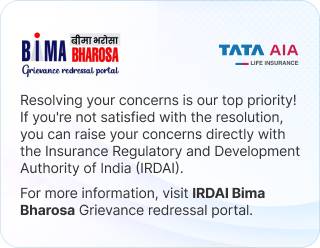TIN and TAN are unique numbers applicable to business entities for the purpose of tax filing in India. Understanding the difference between TAN and TIN helps businesses and entities learn about their functionalities. Read this blog to gain a better understanding!
Setting up a business or enterprise is a challenging task requiring much documentation and paperwork. Every business in India needs to pay taxes* at regular intervals. Income tax returns should be filed with proper documentation. However, there are several terms associated with income tax, such as TIN and TAN, which may make this process complicated.
While filing a tax return is crucial, businesses seek ways to exempt tax deductions. While individuals file their income tax and get tax deductions under Section 80C of ITA, business entities must file their tax returns separately.
Business entities filing tax returns must be aware of tax jargon, like TIN and TAN. In this blog, let us learn the difference between TAN and TIN to help you understand these concepts better.
What is TIN?

The TIN full form is a Taxpayer Identification Number, a unique 11-digit number that works as an identification code. The Income Tax Department issues the unique number to all businesses and entities under Value Added Tax. All traders, exporters, business owners, etc., must register for a TIN.
The TIN is allotted based on the individual's geographical location. The first two numbers in the Taxpayer Identification Number represent the individual's state. In addition, the other alphanumeric digits represent the area and districts of registered dealers.
Further, the TIN is mandatory for businesses or dealers to conduct interstate sale transactions. Dealers and business owners need to specify their TIN on their VAT collections. It simplifies understanding of VAT transactions, such as the amount of VAT collected and paid. Besides this, TIN is an essential document while filing quarterly and annual tax returns.
What is TAN?
TAN, also known as Tax Deduction and Collection Account Number, is a unique 10-digit number issued by the Income tax department. Under the ITA 1961, Section 203A, all entities or businesses that collect or deduct tax must apply for TAN.
The TAN in income tax is assigned to individuals based on the online application to the NSDL-TIN or any authorised facilitation centre. TAN is an important document that must be submitted when filing tax returns by all business entities. Not mentioning TAN while filing returns can lead to a penalty of ₹10,000.
Furthermore, as per Section 203A, quoting TAN in cases like financial transaction statements, in case of TDS or TCS payment challans, etc., is mandatory. Besides this, having multiple TANs is illegal. In the case of possessing multiple TANs, individuals can be fined. Businesses and entities must submit the duplicate TAN to authorities or cancel it.
Difference between TAN and TIN
TIN and TAN are unique tax identification numbers in India issued by income tax authorities to streamline the tax-related process. While TIN is necessary for states and entities, the TAN is issued to financial institutions and companies. Here are some critical differences between TIN no. and TAN no.
Binding Law - One of the significant differences between TIN and TAN is binding law. The TAN in Income tax comes under the purview of Section 203A of ITA. In contrast, TIN law binding depends on the state government.
Allocation Agency - Another significant difference between TAN and TIN is its allocation or issued agency. The Income Tax Authority of India issues TAN, while TIN is issued by the commercial tax department of an applicant or individual's state.
Purpose -While both are unique tax identification numbers, they vary in purpose. TIN aims to track or keep an eye on VAT-related activities in India. On the other hand, TAN is issued to streamline the deduction and collection at the source.
Holder - Another thing that distinguishes both TIN and TAN numbers is their target audience or holder. TAN number is possessed by the entity or institution responsible for deducting and collecting TDS. However, other entities like traders, dealers, and manufacturers who fall under the purview of VAT need to have TIN.
Documents Required - Lastly, while applying for both numbers, applicants need to submit additional documents as the authority asks. For TAN, additional documents need to be submitted in offline mode; however, if you are applying online, submit the signed acknowledgement copy to NSDL. For TIN, documents like address and identity proof must be submitted.
Conclusion
Here, we have mentioned all about the TIN and TAN numbers and how they are different from each other. TIN helps entities to have one centralised place for all VAT transactions. It shows how much VAT is paid, collected and needs to be paid in the future. In contrast, TAN is assigned to financial institutions and companies that collect or deduct TDS.
If you are an individual taxpayer, TIN and TAN are not applicable to you. In this case, you need to understand the provisions of Section 80C to understand the tax filing rules and deductions applicable to you.











 FOR EXISTING POLICY
FOR EXISTING POLICY 
 FOR NEW POLICY
FOR NEW POLICY 








